Submitted by chandra on Wed, 2016-09-14 10:22
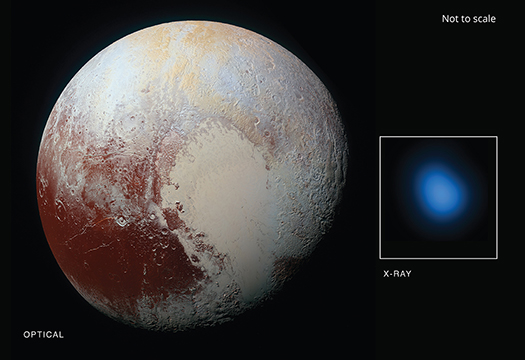
The first detection of Pluto in X-rays has been made using NASA's Chandra X-ray Observatory in conjunction with observations from NASA's New Horizon spacecraft. As reported in our press release this result offers new insight into the environment surrounding the largest and best-known object in the solar system's outermost regions.
Submitted by chandra on Thu, 2016-09-08 12:24
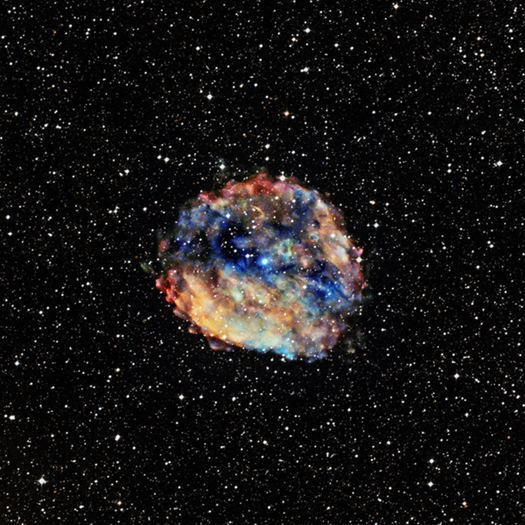
Using NASA's Chandra X-ray Observatory and other X-ray observatories, astronomers have found evidence for what is likely one of the most extreme pulsars, or rotating neutron stars, ever detected. The source exhibits properties of a highly magnetized neutron star, or magnetar, yet its deduced spin period is thousands of times longer than any pulsar ever observed.
Submitted by chandra on Tue, 2016-08-30 10:39
 Tao Wang
Tao WangWe are pleased to welcome Dr. Tao Wang as a guest blogger. Tao is the first author of a paper that is the subject of our latest press release, about an extremely distant galaxy cluster. Tao is now a postdoc in CEA/Saclay, France, working with Dr. David Elbaz on high-redshift galaxies and galaxy clusters, and received a PhD in astrophysics from Nanjing University, China in 2012. During his PhD, he worked for two years in the Harvard-Smithsonian Center for Astrophysics and then worked as an associate researcher back in Nanjing University for one year before starting his postdoctoral work at CEA/Saclay in 2013.
Galaxy clusters are the largest known gravitationally bound structures in the universe and usually consist of hundreds of galaxies distributed in a relatively small area a few million light-years across. One of the most prominent features of clusters is the presence of a predominant population of massive, elliptical galaxies in the cluster core. These galaxies are among the most massive galaxies in the universe and are believed to have rapidly formed their stars a long time ago. However, how these galaxies formed and why have they stopped forming new stars remain mysteries. Solving these mysteries is essential to our understanding of both galaxy and cluster formation. To answer these questions, the key is to search for and study galaxy clusters (or their progenitors) in the early universe, right when they form.
Submitted by chandra on Tue, 2016-08-30 09:48
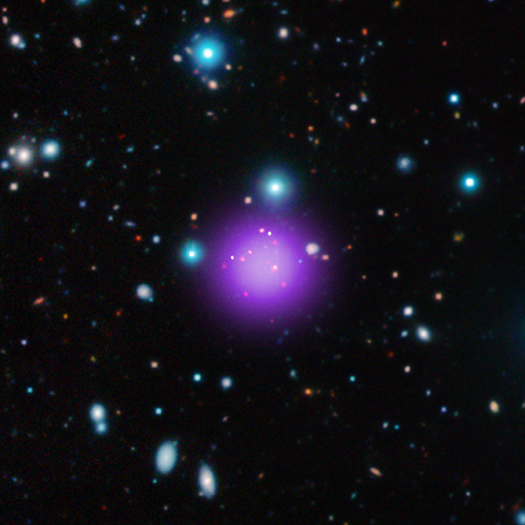
This image contains the most distant galaxy cluster, a discovery made using data from NASA's Chandra X-ray Observatory and several other telescopes. The galaxy cluster, known as CL J1001+0220, is located about 11.1 billion light years from Earth and may have been caught right after birth, a brief, but important stage of cluster evolution never seen before.
Submitted by chandra on Wed, 2016-08-24 10:11
We are very pleased to welcome two special guest contributors to the Chandra blog. Amy Nuccitelli and Jonathan Brande both spent the summer of 2016 working as interns with the Chandra X-ray Observatory team at its Operations Control Center. Amy Nuccitelli will enter her junior year as a mathematics major at James Madison University in Harrison, VA, while Jonathan is pursuing a major in astronomy and a minor in computer science at the University of Maryland, College Park. We thank Amy and Jonathan both for their hard work on the Chandra mission and also for taking the time to share their experiences with the Chandra bog.
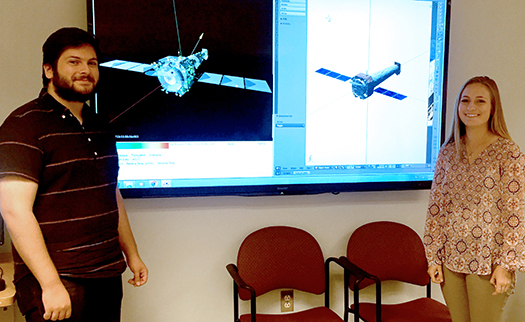 Jonathan Brande and Amy Nuccitelli
Jonathan Brande and Amy Nuccitelli
Submitted by chandra on Fri, 2016-08-19 10:38
We welcome back Jonathan Taylor as a guest blogger. Jonathan is a Senior Lecturer in Creative Writing at the University of Leicester, UK, along with an author and critic. He has written several poems for us in the past: “Black Hole in B-flat”, “History Lesson” and “!!**&@??”. He has also organized poetry competitions among his students, in blog posts here, here, here, here and here.
I was fascinated by Chandra’s press release of 27 June 2016, ‘Clandestine Black Hole May Represent New Population.’ The very title of the press release sounds ‘poetic,’ in the idea of ‘Clandestine’ – a concealed or secretive – Black Hole; and the findings described in the press release are even more so: having concluded that “a peculiar source of radio waves thought to be a distant galaxy is actually a nearby binary star system containing a low-mass star and a black hole,” astronomers have suggested that “there may be a vast number of black holes in our Galaxy that have gone unnoticed until now .... Because this study only covered a very small patch of sky, the implication is that there should be many of these quiet black holes around the Milky Way. The estimates are that tens of thousands to millions of these black holes could exist within our Galaxy, about three to thousands of times as many as previous studies have suggested.”
Submitted by chandra on Wed, 2016-08-17 09:34
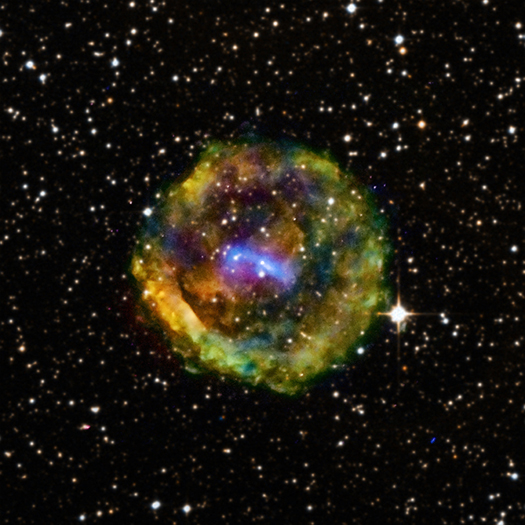
A new look at the debris from an exploded star in our galaxy has astronomers re-examining when the supernova actually happened. Recent observations of the supernova remnant called G11.2-0.3 with NASA's Chandra X-ray Observatory have stripped away its connection to an event recorded by the Chinese in 386 CE.
Submitted by chandra on Tue, 2016-08-09 12:23
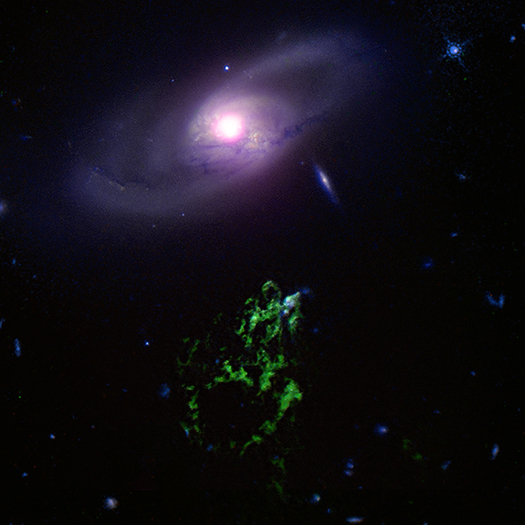
Two cosmic structures show evidence for a remarkable change in behavior of a supermassive black hole in a distant galaxy. Using data from NASA’s Chandra X-ray Observatory and other telescopes, astronomers are piecing together clues from a cosmic “blob” and a gas bubble that could be a new way to probe the past activity of a giant black hole and its effect on its host galaxy.
Submitted by chandra_blog_manager on Tue, 2016-08-02 14:38
On August 5th, the 2016 Olympic Summer Games will begin with the Opening Ceremonies in Rio de Janeiro, Brazil. A new project from NASA’s Chandra X-ray Observatory and its Communications group takes a look at the amazing feats performed by Olympic athletes and tries to provide context for them in an innovative way.
Submitted by chandra_blog_manager on Mon, 2016-08-01 13:53

3D Supernova Remnant. Credit: NASA/CXC/SAO
Pages